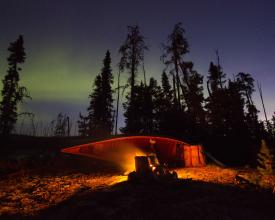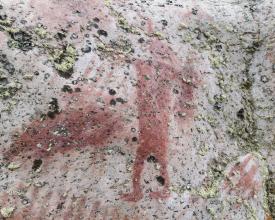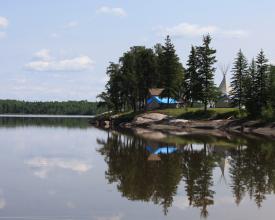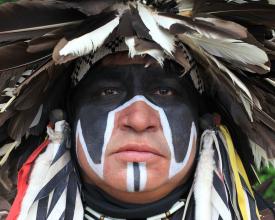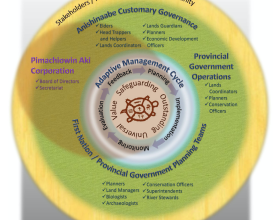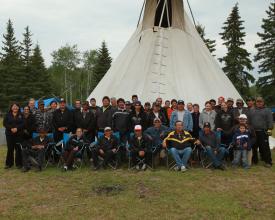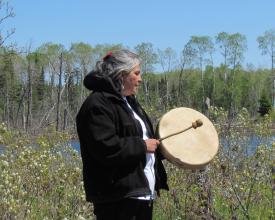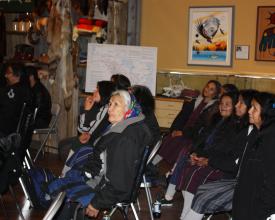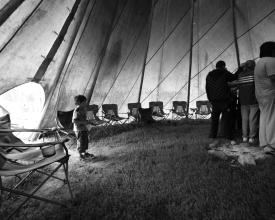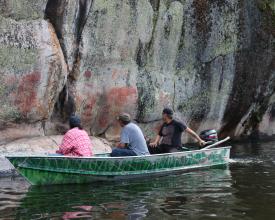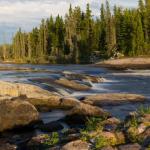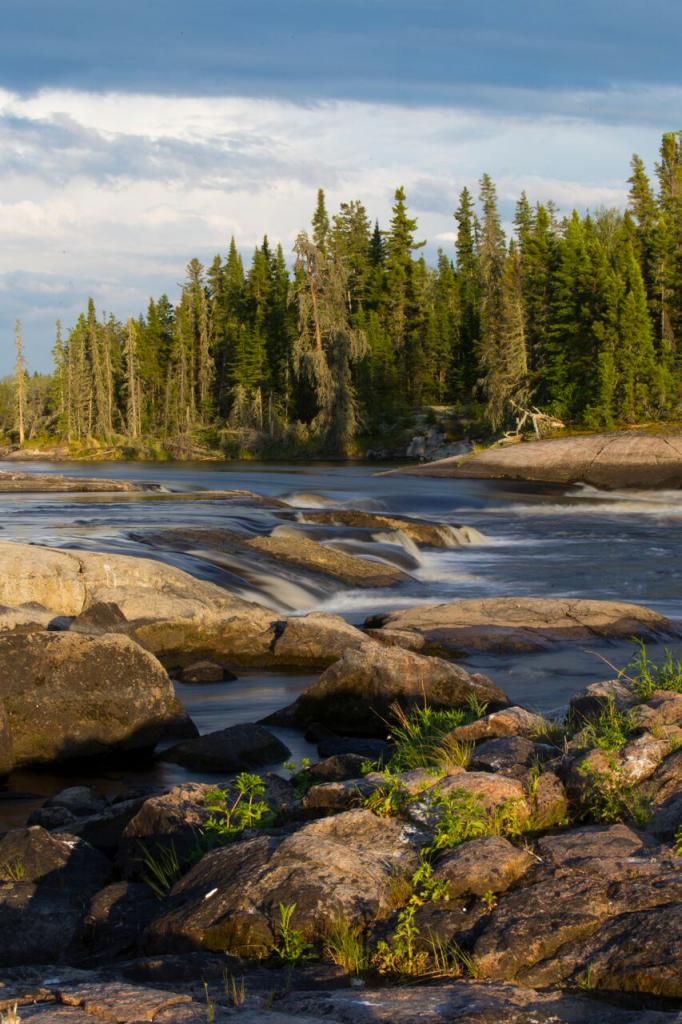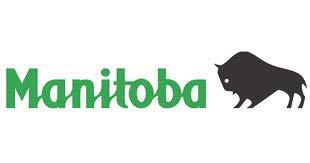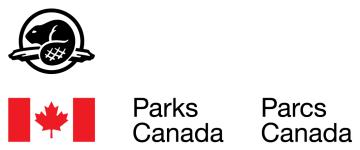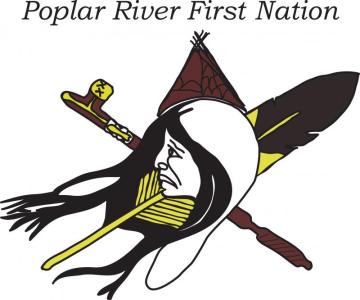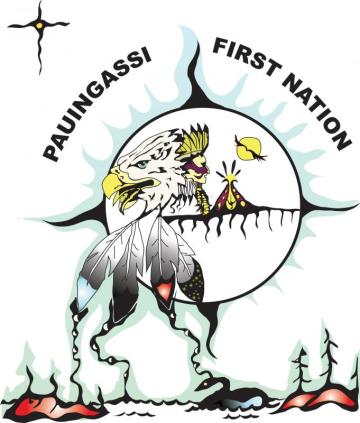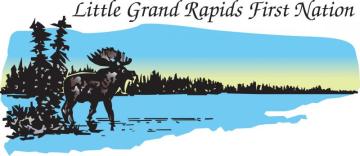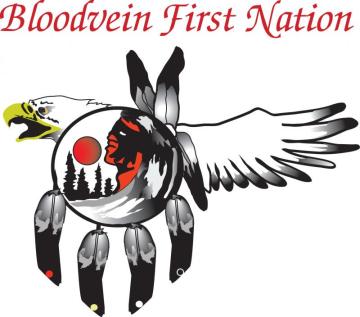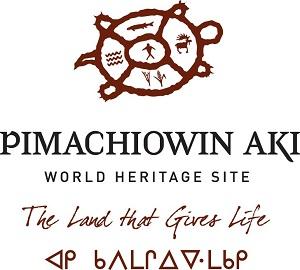
Valuing the interlinkages between nature and culture in the planning and management of Pimachiowin Aki World Heritage Site, Canada
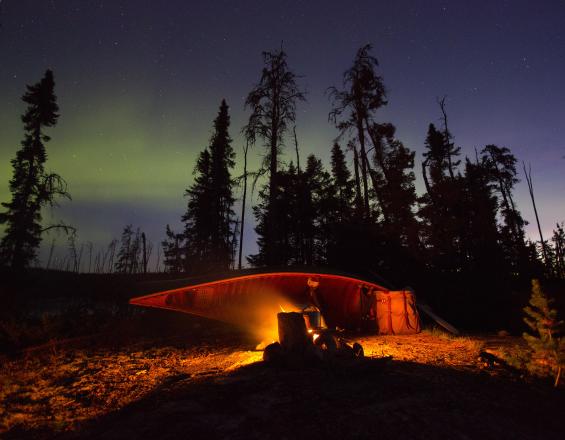
Pimachiowin Aki (the Land That Gives Life) was inscribed in 2018 on the World Heritage List as Mixed Cultural and Natural Heritage under criteria (iii), (vi) and (ix). Composed of Atikaki Provincial Park, Woodland Caribou Provincial Park, the Eagle-Snowshoe Conservation Reserve, and four First Nations’ Traditional Use Planning Areas, Pimachiowin Aki, is an exceptional example of the global boreal biome and a cultural landscape that provides testimony to the tradition of Ji-ganawendamang Gidakiiminaan (Keeping the Land). Anishinaabe First Nations signed an Accord in 2002 to protect and care for ancestral lands and way of life, and to seek inscription of a World Heritage site. In 2006, First Nations and provincial governments created the Pimachiowin Aki Corporation, a not-for-profit charitable organization to prepare the nomination and develop a management plan according to principles of mutual respect and collaboration.
Context
Challenges addressed
Social challenges: potential loss of cultural identity and Anishinaabemowin (Ojibwe language); achieving unity and consensus on the vision of the future, values, planning goals and administrative boundaries; capacity to plan; recognition of traditional knowledge, beliefs and stewardship practices in decision-making processes.
Economic challenges: poverty; sustaining traditional livelihoods; food insecurity; community infrastructure including housing; local economic development and diversification that contributes to the well-being of the communities.
Environmental challenges: climate change; state of conservation monitoring and reporting; increased hunting and fishing pressure; legal recognition of, and compliance with, land management plans and zoning prescriptions.
Location
Process
Summary of the process
To protect Anishinaabe ancestral lands, respecting and using a land management and planning process based on Anishinaabe knowledge, beliefs and practices were fundamental. Land management and planning and World Heritage nomination processes enabled the recognition and valuing of these areas as a cultural landscape. The creation of the Pimachiowin Aki Corporation (BB1), a not-for-profit charitable corporation which involves First Nation and provincial governments was essential, especially in embarking on the World Heritage nomination process. Underpinning the process is the continuous and regular advice of Elders (BB2), which guide and still accompany the management and protection of the site. Based on these foundations, the establishment of a knowledge systems dialogue (BB3) was necessary for land management and planning to succeed, and to meet conditions of authenticity and integrity and requirements for protection and management for the nomination and ongoing management of the site. The involvement of Elders, youth and women (BB4) in the whole process ensures the sustainability of the solution. The development of a participatory monitoring system (BB5) supports the continuous promotion of Anishinaabe knowledge.
Building Blocks
Creation of Pimachiowin Aki Corporation: a multi-level and multi-stakeholder partnership
First Nations started a process to define Ancestral Lands by completing land use and occupancy studies, archaeological research, moose habitat studies, historical documentation, and community-based land management plans. From 1999, they started the dialogue on the importance of Ancestral Lands, way of life, industrial threats and how they could work together and help each other. In 2002, the First Nations Accord was signed, a historical document describing the commitment to work together to protect Ancestral Lands. The impetus for creating a not-for-profit charitable corporation with a Board of Directors was to have a forum for continued and regular dialogue, consensus-based, non-hierarchical decision-making and a legal entity that could make contracts, raise funds, and develop a World Heritage nomination dossier. The Corporation was established in 2006 with a Board consisting of one representative from each First Nation and Provincial Government. An Executive Director oversees operations and provides support and advice. The mission is to acknowledge and support Anishinaabe culture and safeguard the boreal forest, preserving a living cultural landscape to ensure the well-being of Anishinaabeg and for the benefit and enjoyment of all people.
Enabling factors
- First Nations’ Accord signed in 2002 to work together to protect Ancestral Lands.
- Interprovincial Wilderness Area (Manitoba & Ontario) MoU signed in 1998 to work together on planning and management of adjacent provincial parks.
- IUCN call for WH nominations on boreal shield ecosystems in 2003.
- Willingness of Manitoba & Ontario Governments and the four Pimachiowin Aki First Nations to work together on a nomination.
- Provision of funds by the provinces to establish the Pimachiowin Aki Corporation.
Lesson learned
- Need for predictable levels of support -not only annual government grants- to contribute to financial sustainability and greater staff retention.
- Importance of strategic planning and leadership development.
- Need to enhance the organization’s ability to leverage financial and human capital, improve grant management, allow for longer-term evaluations, strengthen programs and reach out to donors who want to help build a program.
- Ensure wide and frequent engagement/participation of all partners in defining vision, mission, charitable purposes, and duties of Directors.
- The Corporation is successful not only because certain procedures are in place to channel information and communication, but because it fosters a culture that values people learning from one another, and recommends ways of building capacity and creating opportunities in areas where challenges currently exist.
Honouring the wisdom, vision, and ki ki no mah gay win (teachings) of the Elders to guide use of the land and respectful relations between each other and with the land
Elders and others with land-based knowledge (ki ki no mah gay win) are important for their role in guiding decision-making in personal, family and community matters related to use of the land. Knowledgeable Elders are respected for their role in ensuring continuity of Ji-ganawendamang Gidakiiminaan (keeping the land). Elders advocated for the community voice to be heard in defining strategic direction for Ancestral Lands, and in the nomination dossier and all communications and decisions about Pimachiowin Aki. Elders are part of Annual General Meetings, regular and special meetings of the Corporation, planning team meetings, and community-based lands working group meetings, to guide protection and management of Pimachiowin Aki in accordance with the principles of Ji-ganawendamang Gidakiiminaan. Adherence to these principles requires local community authority in protection and management and a continued presence on the land. Those with the greatest experience on the land (e.g. Elders, head trappers, trapline helpers and others with personal and family ties to specific family harvesting areas) are leaders in sharing Akiiwi-gikendamowining and ensuring compliance with the principles of Ji-ganawendamang Gidakiiminaan.
Enabling factors
- First Nations Accord.
- Drafting the Nomination dossier.
- Elders and Youth Forum.
- Elders’ willingness to share their knowledge with the rest of the world
- Community-driven, Elders-led process.
- Elders’ willingness to devote their time and energy in taking part in meetings outside the communities to ensure their voices are heard and understood.
- Meetings of community-based land working groups.
Lesson learned
- Patience in land management planning and nomination processes to ensure Elders are engaged early and often.
- Giving attention to political imperatives but not allowing them to dictate schedule / deadlines.
- Indigenous-led nominations or any other initiative must include Elders’ knowledge and voices at the forefront at all stages.
Establishing knowledge systems dialogue between Indigenous peoples and Western scientists in land management and planning
The Anishinaabe knowledge system carried and shared by the Elders has always led community life and land decisions. Through the First Nations Accord, land management and planning and the World Heritage nomination processes, the Pimachiowin Aki First Nations’ knowledge keepers began to work with scientists who were adding their system of knowledge to traditional area plans and the nomination. The only process for success was to set up a regular dialogue between both knowledge systems, and the engagement at the community level of Elders and other knowledge keepers, to ensure the community voice was heard and documented in the plans, the nomination dossier and in all communications, through community-based land working group meetings, meetings of the Pimachiowin Aki Corporation, and meetings of First Nations and government representatives on land management planning and plan implementation teams. The community knowledge keepers and scientists learned to understand each other. This was a long process and with mutual respect and patience, we were able to agree on the information provided in the documents. This process is still in place today, with the engagement of communities when Provincial Governments, Universities and organizations carry out research projects in Pimachiowin Aki.
Enabling factors
- Recognition of the validity of Anishinaabe knowledge and belief systems, and of the rights of First Nations to speak for Ancestral Lands.
- Respectful dialogue and willingness of participants from both systems to understand each other.
- Funding for regular community meetings provided by the 2 provincial governments, with some funds contributed by the First Nation governments.
Lesson learned
- Engaging the people who live in protected areas in meaningful dialogue and decision-making processes about the values, history and future of these areas, and educating people about co-generation of knowledge, as opposed to integrating cultural wisdom and traditions into existing policies, sustainability practices and management plans.
- Ensuring that Anishinaabe and scientific knowledge systems work hand in hand; it takes time and hard work to establish a good working relationship.
- Openness and learning from each other in a cross-cultural environment.
- Land management planning to define and recognize First Nation communities' visions, goals and priorities is a foundation of the World Heritage site nomination.
- Full involvement of Anishinaabe knowledge keepers is a requirement for all potential research in the Pimachiowin Aki World Heritage Site.
Intergenerational and inclusive approaches to participation in communities’ dialogue
The voices and perspectives of youth must be acknowledged as well as those of adults and Elders to ensure the whole community is part of the dialogue. Youth participated in the development of community-based land management plans and the Pimachiowin Aki nomination dossier. We will need the youth to understand and carry on this work after the Elders are gone. For this, presentations and dialogue sessions with Elders took place at community schools and youth forums. The communities carry out ongoing Elders and Youth Anishinaabe Language, Knowledge and Lands Teaching camps to ensure children and youth understand the importance of the land and continue to support this work in the future. These camps are held outside the communities, throughout the summer.
In parallel, Pimachiowin Aki Corporation held two regional women’s forums: the Pimachiowin Aki Women’s Forum on January 18, 2017, and the Ikwewak Gikendasowinan on January 23, 2018 where Elders and young women participated in making recommendations to the Pimachiowin Aki partners which were included in the nomination dossier. Ongoing participation and leadership of women in governance is an important feature of the site management framework.
Enabling factors
- Recognizing the importance of facilitating interactions between Elders and youth in preserving the Anishinaabe way of life and language, the boreal shield landscape, and the interdependence of culture and nature.
- Funds to facilitate meetings of community-based land working groups and land-based learning opportunities.
Lesson learned
- Facilitating the participation of youth and women from the beginning is crucial for success. Elders and Youth dialogue is essential for the ongoing success of the communities’ efforts to protect Ancestral Lands, and Pimachiowin Aki, now and in the future. However, at times during the land management and planning and nomination processes when we had time or budget constraints we left our youth engagement out. That was our mistake, and we are now busy making sure that we focus on youth engagement.
- The Corporation continuously supports experiential opportunities for youth in purposeful, land-based activities, emphasizing that respectful behaviour is required for survival, and ensures that local and regional schools are provided with information and resources to incorporate the cultural, natural, and educational values represented by Pimachiowin Aki into their curricula.
- Pimachiowin Aki First Nations Guardians Program ensures that the intergenerational dialogue continues.
Building a participatory monitoring and reporting system on the state of conservation in the World Heritage Site
Pimachiowin Aki First Nations and the Pimachiowin Aki Corporation developed a Guardians Program in 2016 to implement the strategic direction set out in approved management plans of ensuring community well-being, raising funds, supporting local economic development, creating opportunities for Elders and youth to work together, maintaining/enhancing our cultural tradition, and ensuring compliance with customary laws and policies. Capacity and skills have been built among community members in communication, record-keeping, survival, good health, use of GPS to collect and record geographic information. Guardians are community members that observe, record and report on the health of ecosystems and cultural sites, educate the public about how to be good stewards of the cultural landscape, work with provincial government land and resource managers, and conserve pictographs, petroforms, archaeological sites, cultural sites, and intangible values shaping Anishinaabe connections with the Site including oral traditions central to the expression and intergenerational transmission of Akiiwi-gikendamowining (land-based knowledge), customary laws, and geographical names.
Enabling factors
- Funding (Guardians’ wages and operating costs, Elders’ honoraria, workshops and training).
- Strong leadership at community-level.
- Knowledge of the indicators of social, economic, cultural and environmental values of the site.
- Good relationships with leaders, community members, Western modern scientists and government land managers (mutual respect, trust, honesty, parity in decision-making).
- Opportunities to share experiences with other Guardian and stewardship programs.
Lesson learned
- Success of the Guardians Program depends on keeping Guardians employed on a full-time basis, and on maintaining connections between Guardians and Elders and youth.
- Guardians initiatives risk failing completely or produce disappointing outcomes if careful planning is not completed before monitoring activities start. For monitoring to be successful, data and information needs to be stored, organized and distributed in ways that ensure it is useful, maintains its quality and credibility, and protects confidential information.
- Compiled GIS (Geographical Information System) based inventories and databases are the best way to identify data gaps, which can then be used to update monitoring priorities and plans. A monitoring framework and information management system provide critical information for governance and decision making.
- Elders and other knowledge-keepers are engaged in developing a broader set of indicators and metrics to provide a reliable statement on the condition of - and trends in - ecosystem health and the cultural landscape.
Impacts
- An integrated and adaptive management plan for the site, unifying 9 regional management plans, integrating customary governance, legal prescriptions and institutional arrangements across the World Heritage site to safeguard the integrity, authenticity and attributes that convey its Outstanding Universal Value.
- International recognition of the Anishinaabe cultural tradition of caring for nature and the intergenerational transmission of knowledge, beliefs and practices.
- Reinforcement of Anishinaabe cultural identity and empowerment of Indigenous youth and women.
- Renewed and strengthened dialogue among First Nations communities and provincial governments.
- Influence in the World Heritage system towards interlinking natural and cultural values in evaluation processes and acknowledging Indigenous peoples’ voices and ways of knowing in accordance with the principle of free prior and informed consent.
- Request of advice by other State Parties to the World Heritage Convention.
Beneficiaries
Poplar River, Pauingassi, Little Grand Rapids, and Bloodvein River First Nations, Manitoba and Ontario Provinces, all generations of humanity, all gifts from the Creator.
Sustainable Development Goals
Story
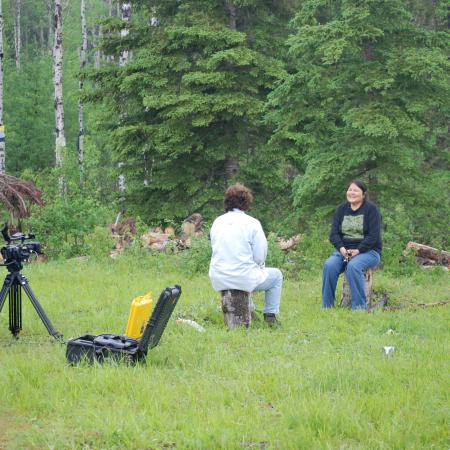
Our people believe that our responsibility for taking care of the land came from The Creator.
We still live by that knowledge and wisdom that was passed down to us by our ancestors.
We gain life, wisdom and knowledge from the land. We strongly believe that the land is very much alive and we need to acknowledge that life and spirituality of the land. Acknowledging the spirituality of the land sustains the health of our people and reminds us that we are inseparable from the land. One cannot survive without the other.
This knowledge has been passed down through oral history and it is our responsibility to ensure our knowledge and wisdom is passed on to the next generation.
We, as Anishinaabeg believe we do not own the land. It belongs to our future generations; therefore, we have to think very carefully about how the decisions we make today will affect the many generations to come.
In our Land Management Plans, the teachings that are imbedded within the documents are very ancient. The Plans are living documents that carry those teachings into the next generation.
Our people have been practicing land use planning for thousands of years. They never left any traces of destruction or caused the extinction of any species. We knew that we depended on our land for our survival.
Today, we are recognizing just how important our lands and teachings are to us. We as Anishinaabe people have endured the effects of colonization and assimilation. We are at the brink of losing our language, culture and identity. We understood our Elders who told us that in order for us to heal we needed to go back to the land to restore the balance within our community. We need to teach our young people - our children and grandchildren - the importance of the sacred relationship our people have with the land. They need to understand the spiritual connection our people have with the land and the life that surrounds us.
Everything that our ancestors used from the land was treated with respect. To me, that is my true definition of land use planning. Our spiritual beliefs need to be acknowledged and included in anything we do as Anishinaabeg. (Sophia Rabliauskas, 2015, Poplar River First Nation community member)

